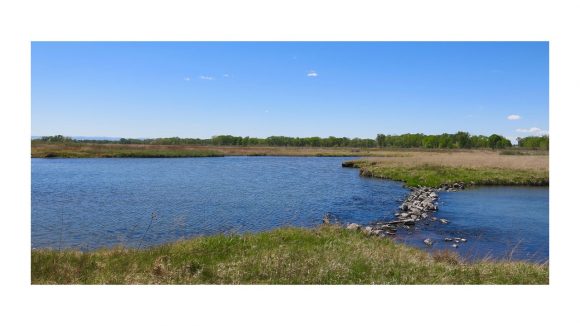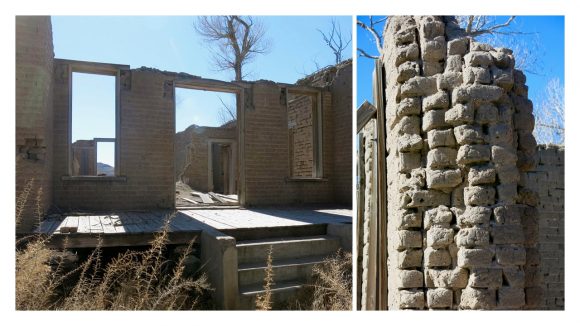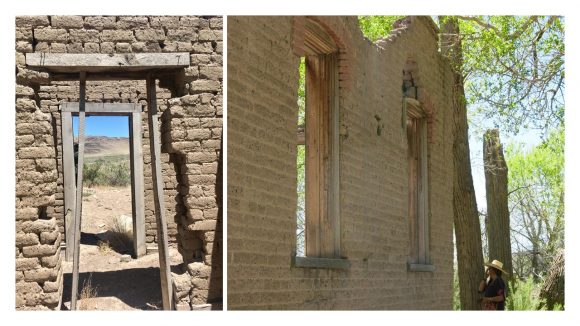 Year Listed: 2019
Year Listed: 2019
County: Conejos County
Construction Date: 1880
Threat When Listed: Demolition by Neglect; Vandalism, Remote Location with Limited Public Access, Weatherization
Status: ALERT
Video courtesy of CBS4
The McIntire Ranch is a historic archaeological site that includes the visible remains of the ranch headquarters established by Albert and Florence McIntire circa 1880. The McIntires built the mansion after settling near the Conejos River and the abundant water supply from the nearby McIntire Spring. Florence was well educated and came from a wealthy eastern family. A lawyer by profession, Albert McIntire served as the Conejos County Judge and the 12th Judicial District Judge before he was elected Governor of Colorado in 1895, an event that took him away from the ranch for long periods of time and prompted a divorce in 1898. Florence was deeded the property and continued to live on the ranch, acquiring additional property and successfully managing the ranch until her death in 1912.

The site includes the ruins of the large Territorial Adobe ranch house and a number of outbuilding foundations, a masonry spring exposure, a livestock pen and other features including seven artifact concentrations. The most visible and striking component of the site are the ruins of the ranch house which are surrounded by several large cottonwood trees. A number of walls remain standing in various stages of deterioration. There is no roof and the adobe walls and interiors are exposed to the elements. The ranch house exhibits an unusual method of adobe construction, utilizing molded adobe bricks comparable in size to standard kiln-fired bricks and traditional Euro-American brick construction techniques. Despite the deteriorating conditions of the walls, these unusual construction techniques are visible in the remaining standing walls, conveying the character defining features of the Territorial Adobe type in its plan, with Italianate window openings and decorative brick hold molds.
 The McIntire Ranch was listed on the National Register of Historic Places in 2008 for its contribution to the social history of the area, specifically women’s history and agriculture. The Bureau of Land Management (BLM) acquired the site in 1993, with the assistance of The Nature Conservancy, primarily to protect the abundant wildlife habitat. There is strong support locally and regionally for helping the BLM to preserve the ranch house ruins, from a number of local partners, including the Sangre de Cristo National Heritage Area, the Rio Grande del Norte Center at Adams State University, the Mortenson Family (descendants of Albert and Florence McIntire), the Western Rivers Conservancy, and the Rio Grande Headwaters Land Trust.
The McIntire Ranch was listed on the National Register of Historic Places in 2008 for its contribution to the social history of the area, specifically women’s history and agriculture. The Bureau of Land Management (BLM) acquired the site in 1993, with the assistance of The Nature Conservancy, primarily to protect the abundant wildlife habitat. There is strong support locally and regionally for helping the BLM to preserve the ranch house ruins, from a number of local partners, including the Sangre de Cristo National Heritage Area, the Rio Grande del Norte Center at Adams State University, the Mortenson Family (descendants of Albert and Florence McIntire), the Western Rivers Conservancy, and the Rio Grande Headwaters Land Trust.
Together with these stakeholders, CPI has completed the initial site orientation and met with technical staff from the State Historical Fund to determine whether or not a Historic Structure Assessment was necessary. It was recommended that a mini-grant would be more appropriate to secure funding in order to apply a protective coating over all the ruins to stabilize them. Reconfiguration of the grant application will need to take place in 2022. CPI, the BLM, and locals continue to seek funding opportunities in order to save as much information as possible from living descendants of the McIntires, explore the possibility of installing interpretive signage at the site, and increasing accessibility under controlled conditions.
| “Preservation of this site will help ensure that the rich history of the San Luis Valley, including its agricultural lands and the architecture of its dwellings, will be preserved in a most honorable way.” ~ Sofia Marquez, Architect |



